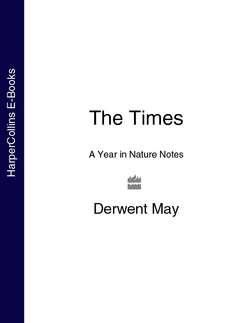Читать книгу The Times A Year in Nature Notes - Derwent May - Страница 73
7th March
ОглавлениеMANY MOUNTAIN OR blue hares in Scotland are pure white in winter to match the snow – although they keep the black tips on their ears. Others turn only partially white. If the snow melts before they have turned bluish-brown again, they become very conspicuous as they streak across a heathery or grassy hillside, and their winter camouflage becomes a disadvantage. In summer they can be distinguished from brown hares because they are smaller, and lack the brown hare’s distinctive black tail, or scut.
Ptarmigan on the Scottish mountaintops also turn white in winter. They stay among the snow, burrowing beneath it for heather leaves and dried bilberries. They will soon be exchanging their white feathers for a mottled grey plumage, which in summer will disguise them equally well on the rocky slopes. Even at that season, however, they reveal unmistakable white wings when they fly.
Red grouse, unlike the ptarmigan, have been coming down into farmland when the snow has made it hard for them to find food, but they will return to the moors when it has cleared, and will start gorging on fresh heather shoots.
